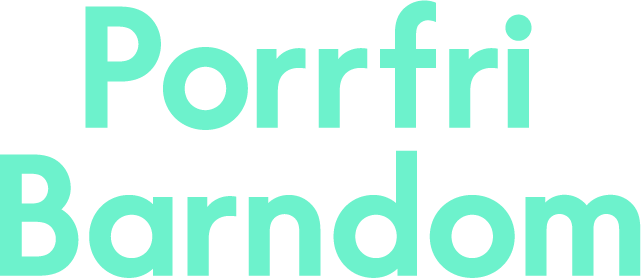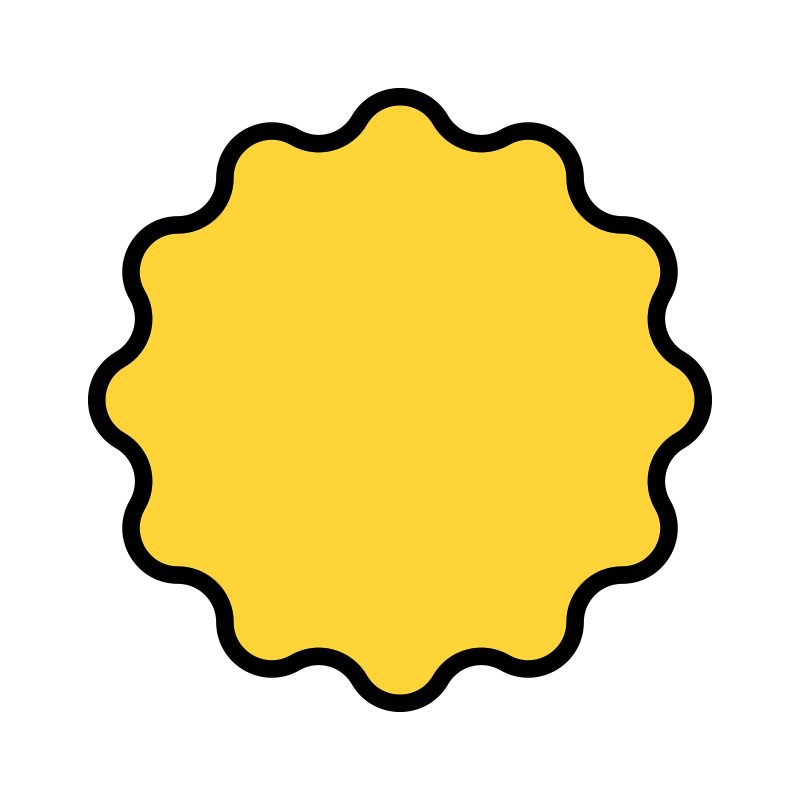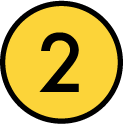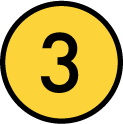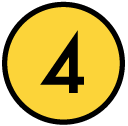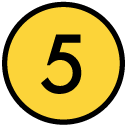
ACTIVATE CHILD PROTECTION
IN 60 SECONDS
Follow the steps below to protect your child from exposure to porn & violence. It's easy, free and only takes 60 seconds! Activate both Apple and Google child protection if your child uses Apple products, i.e. an iPhone, iPad or Mac computer.
Apple products
1. go to "Settings"
2. click on "Screen Time"
3. click on (iOS) "Restrict Content/Privacy", (Macbook) "Content and Privacy"
4. Select (iOS) "Restrict Content/Privacy", (Macbook) "Content and Privacy"
5. click (iOS) "Store, Web, Siri, and Game Center", (Macbook) "App Store, Media, Web, and Games"
6. Click on (iOS) "Web Content", (Macbook) "Web Content Access" and select"Restrict Adult Content"
7. Back to "Screen Time", click on "Use Screen Time Passcode" & select a 4-digit code
Note! Don't forget to also enable SafeSearch if your child uses iPhone. Activate the protection on all Apple products your child uses e.g. iPad and Mac computers.
Google SafeSearch
1. Go to google.se
2. Click on "Settings"
3. Click on "Search settings", under SafeSearch and select "Hide explicit results"
4. Click on "Save" at the bottom of the page
Important! Lock Google's child protection setting SafeSearch by creating a separate account for the child where you state the child's age, then Google understands that it is a child using the browser. Otherwise, it is easy for the child to remove the protection.
DONE!
Further down, there is an even clearer description with screen views.
PRINT AND DISTRIBUTE OUR CHILD PROTECTION GUIDE:
"ACTIVATE APPLE & GOOGLE CHILD PROTECTION IN 60 SECONDS"
Create a pornography-free zone around your child by giving out our info sheet on how to activate Apple & Google child protection in 60 seconds to all parents with children at your child’s school, after-school club, basketball team & in their group of friends!
The only way to protect your child is to protect all the children around your child.
Also spread it digitally, e.g. in Whatsapp chat & email loops with other parents!
Effective & super easy!
Apple products
Go to “Settings” and tap “Screen Time”
Tap “Content & Privacy Restrictions”
Enable “Content & Privacy Restrictions”
Select “Content Restrictions”
Tap 'Web content'
Tap "Limit Adult Websites"
To further enhance safety on an Apple iPhone, you can tap “Use Screen Time Passcode” under “Screen Time” and choose a 4-digit passcode. The code is then requested for access to the sites restricted by Apple.
DONE!
Also activate Google SafeSearch if your child has an iPhone
Google SafeSearch
Visit google.se
Tap “Settings”
Tap “Search settings”, under SafeSearch and select “Filter"
Tap “Save” at the bottom of the page
DONE!
Also activate it on iPads and computers.
Also activate Google SafeSearch if your child has an iPhone or an Android phone.
-
Digital child protection is used to limit involuntary exposure to online pornography for younger children of preschool, primary and junior school age. No digital child protection is one hundred per cent reliable and it must always be combined with regular individual and age-appropriate conversations.
As a parent, you can’t sit back and assume that child protection will do all the work and that your child can tell the difference between sex and the aggressive acts that happen without consent in pornography. Fortunately, you can make a big difference by talking to your child.
-
Digital child protection has the same effect as Systembolaget. It’s not impossible to buy alcohol or get around digital child protection, but they limit access to some extent. Raising the age for first exposure makes a big difference. It’s often more difficult for younger children to cope with their reactions.
There is no watertight protection, but digital child protection reduces the risk of younger children being accidentally exposed to sites with violence and pornography, which is often very crude today with violence and humiliation. Of course, protection should always be combined with conversation.
-
There are millions of free porn sites on the internet that can be accessed without restrictions by anyone, regardless of their age. It’s common for children to be exposed to pornography against their will as young as primary school age, for example by being shown it by a friend or an older sibling. It’s common for mainstream pornography to contain degradation and physical aggression such as strangulation and “gagging”. It also often alludes to incest. Because of the ease of access, pornography has become a primary source of sex education, sometimes the only source, for many children. Children also expose other children to acts they’ve seen in pornography. Read more here about how children can be affected by pornography.
-
Myth: "Digital child protection always removes LGBTI information and sex education pages."
Facts: It is easy to check that a digital child protection service does not delete pages with sex education and LGBTQI information, e.g. umo.se. umo.se, rfsu.se, rfsl.se and snaf.se. It is just as easy to correct if a particular webpage is removed by mistake.
Myth: 'Digital child protection does not work'
Facts: Digital child protection refers to younger children of pre-school, primary and secondary school age where it has a significant effect. There is no digital child protection that is 100% effective, just as there is no door lock, smoke detector or vending machine that is 100% effective. Door locks can be broken, smoke alarms can be broken and it is possible to ask a person over 18 to buy alcohol. Anyone who wants to get around a digital child protection system will always be able to do so, but society limits various things that are harmful to children as much as possible. Digital child protection also has an important normative signaling value. There are different types of digital child protection that are more or less effective. It is therefore important to test the chosen option regularly and to combine digital child protection that limits younger children's exposure to pornography with porn-free policies, individualized and age-appropriate regular porn-critical education and conversations.
Myth: "Digital child protection is counterproductive because it contributes to a lack of conversation."
Fact: Research at Uppsala University* in 2016 shows that only a few of the children in the study had talked to an adult about pornography. At that time, the majority of municipalities had not activated digital child protection against pornography in schools, and similarly, very few parents had activated child protection for their children on private digital devices, yet the conversations did not take place. In other words, the calls are usually not made regardless of whether or not there is digital child protection - unless adults actively initiate the calls. Therefore, it is important that porn prevention includes a comprehensive solution that limits younger children's contact with pornography, combines digital child protection with porn-free policies, individual and age-appropriate regular porn-critical education and porn-critical conversations.Source:
*Magdalena Mattebo, Uppsala University, 2016
-
In 2022, the Council of Europe passed a resolution strongly recommending that all 46 Council of Europe Member States reduce approximately 100 million children’s exposure to pornography. The Council of Europe thus urges the Swedish government – which has still not acted to protect Sweden’s children from pornography in accordance with the Resolution – to meet and guarantee the Council of Europe’s requirements.
Porrfri Barndom has contacted the government to follow up on whether the government will act in accordance with the Council of Europe’s Resolution. So far, the government has not answered the question. Porrfri Barndom continues to follow up in order to get answers.
The Council of Europe has published the following text on the Council of Europe website:
“Digital devices should have built-in adult content blockers to protect children
All digital devices should have easy-to-use parental controls and tools for filtering and blocking pornographic material built into them by default in order to combat children's exposure to adult content, the Assembly said. These control tools should be “systematically activated in public spaces, such as schools, libraries and youth clubs”.
Unanimously adopting a resolution based on the report prepared by Dimitri Houbron (France, ALDE), the parliamentarians expressed deep concern at “the unprecedented exposure of children to pornographic imagery, which is detrimental to their psychological and physical development”. This exposure, they said, “brings increased risks of harmful gender stereotyping, addiction to pornography and early, unhealthy sex.””
Read the the Council of Europe publication in full here!
-
Ask your municipality if there is digital child protection in the municipality’s facilities for children such as schools, after-school clubs and libraries. You can send our pre-written citizen proposal “Hej kommun!" [Hello Municipality!] to your municipality’s info-mail or to the Chairperson of the Municipal Executive Board, regardless of whether or not the municipality accepts citizen proposals. Also ask whether there is digital child protection in your municipality on open wi-fi networks in public environments where children are present such as restaurants, shopping malls, play facilities, libraries, etc.
We can work together to drive development and increase child safety!
